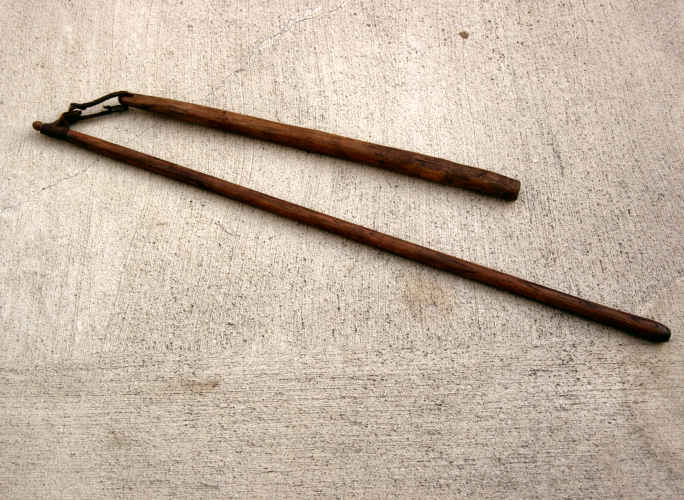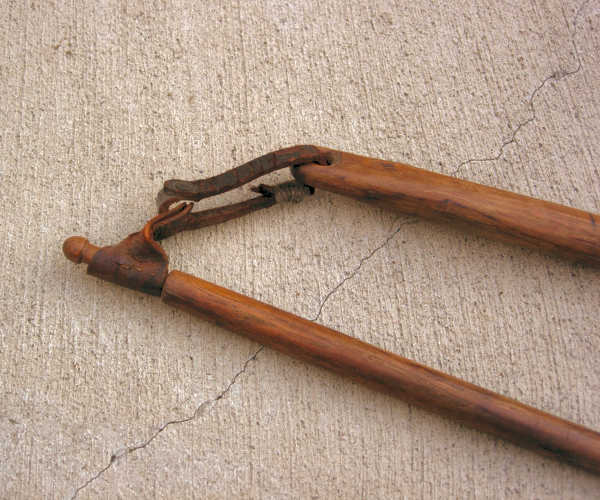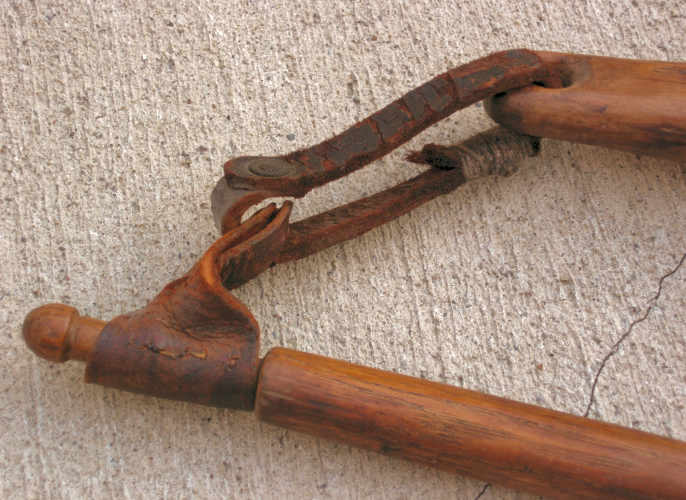


| This tool was used in the process of threshing grain. After the grain crop was cut by hand with the scythe or sickle, and bound into sheaves, it might be left to stand for a few days in the field. Eventually the sheaves of grain would be taken to the barn to be threshed. The sheave would be cut open and the grain allowed to fall onto the floor in a pile. This explanation comes from another page on the MotherBedford website: Threshing involved striking the straw with a flail. The flail consisted of a long wooden pole (the staff), to which was attached, by means of a short piece of leather on one end, another shorter wooden pole (the supple). The flail was described by the author Edwin Tunis as “simply a club, swiveled with leather at the end of a handle about six feet long.” The flail was used by taking hold of the staff, and giving it a swing over the head, to bring the supple down onto the straw with a slap. This process of threshing, by continually striking the straw with the flail, was intended to cause the grain kernels to be knocked out of the heads of the straw. It was important to perform the threshing on a packed-earth floor. In the 1700s, tongue-and-groove boards were not popular, and the threshing was performed on a normal wooden floor, there was the chance of some of the grain being lost between the flooring boards. |


